Heiva in Tahiti
July 2009
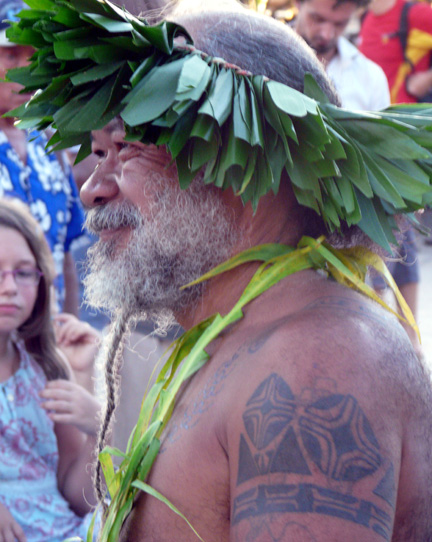
European ships visiting Tahiti in the late 1700's prohibited men from going ashore for food and water except in groups. Tahitians wanted iron, and women lured men with offers in exchange for it. Horny sailors would strip the ship of its own nails! With the arrival of missionaries, the open sexuality of pre-European contact times quickly disappeared, along with dancing, secular music, and traditional dress. Today, many aspects of the traditional culture have been revived, although in modern forms very different from what European explorers witnessed in the early 18th century. Heiva, an annual festival held on islands throughout French Polynesia, celebrates this cultural revival.

16-Person canoes are referred to as "V16's", "v" referring to va'a, canoe in Tahitian. This is the Mens Division.
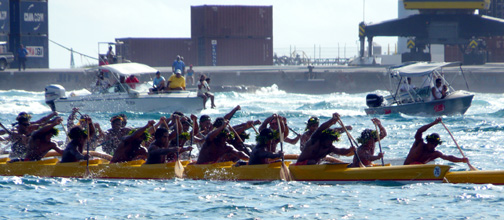
|
The Shell team in the yellow canoe were favored to win . . .
and win they did.
The main harbor in Tahiti is closed for this big annual canoe race.
|
Paddling a canoe as a team takes concentration and plenty of practice.
Lucky spectators watch the action from their own boats.
|
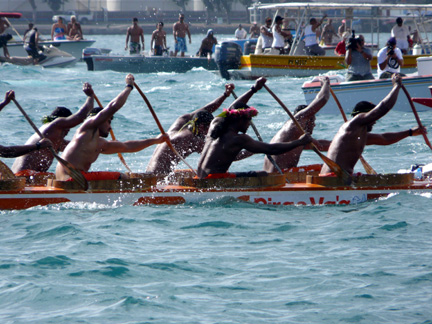
|
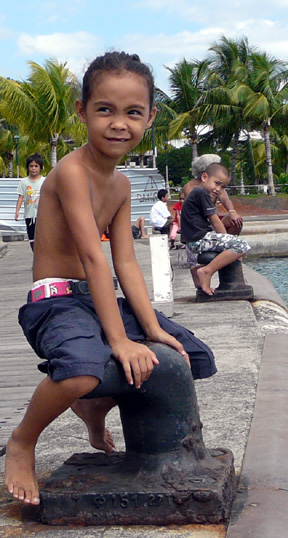
|
Future paddlers
|
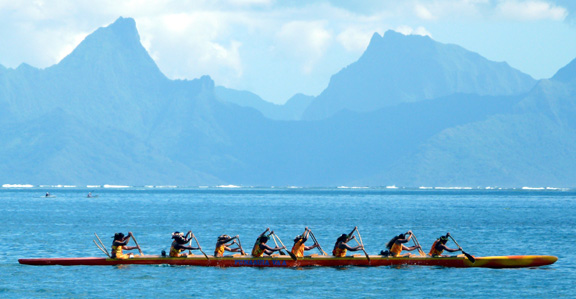
Womens V16 Canoe Racers
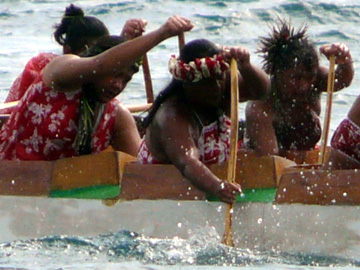
|
It takes some serious muscle to keep these canoes up to speed.
You wouldn't want to get into an arm wrestling match with one of these ladies!
|
Traditional dress is one of the requirements to compete in Heiva events,
thus the colorful tropical prints and crowns of flowers and leaves.
|
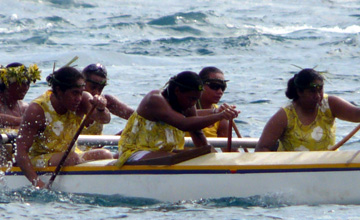
|
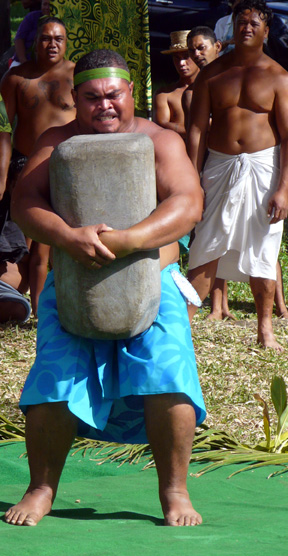
|
Heiva athletics aren't only about canoes.
Rock lifting is a traditional event.
The rocks and their lifters come in various sizes. Men in the "very heavy" category lift stones weighing 150 kilos (330 pounds).
|
The girls get in on the fun too, lifting rocks of up to 60 kilos (132 pounds).
|
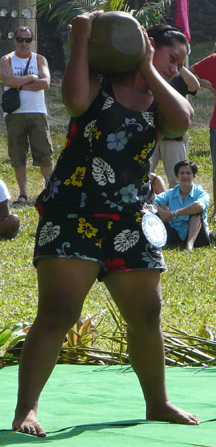
|
Steel-tipped bamboo javelins are launched hundreds of feet toward a coconut target.
|
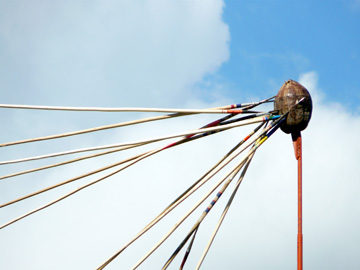
|
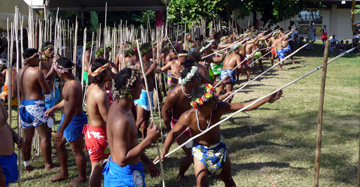
The men have about fifteen minutes to throw all their javelins.
|
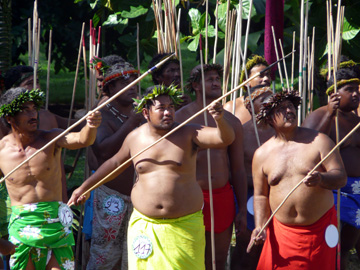
Competitors concentrate on the coconut.
|
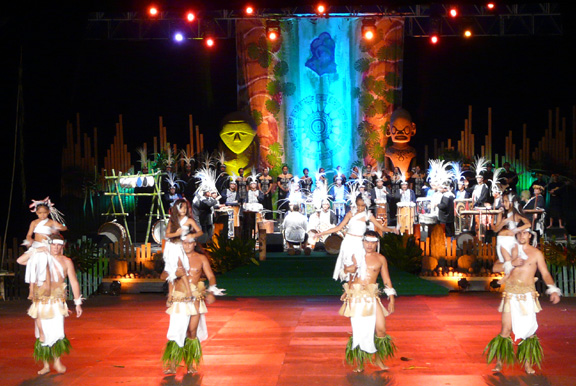
Bringing out the sacrifical virgins (no really, that was the theme of the dance)
|
Our first night at Heiva Tahiti, our favorite dance group was O Tahiti E.
|
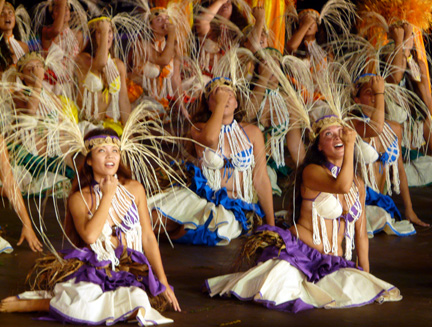
|
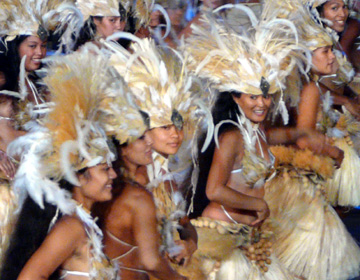
Elaborate costumes left bits of vegetable matter all over the stage (the rules required the use of natural plant materials).
|
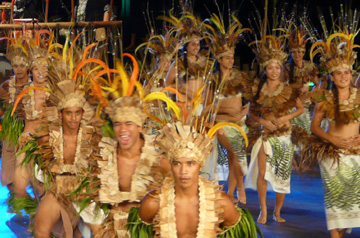
Enormous headdresses sometimes partially obscure faces with coconut fronds. Some costume changes were carried out on stage.
|
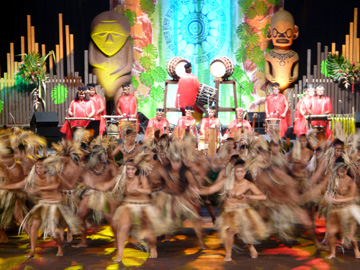
There were 150 dancers on stage at once, plus an "orchestra" consisting of percussion instruments, a ukulele, a nasal flute, and several vocalists.
|
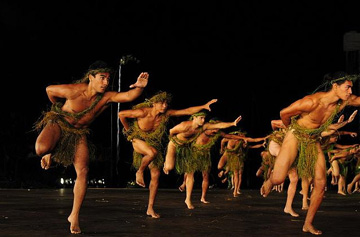
Fascinating choreography included modern dance moves. The group was not exactly traditional, but they sure held our attention.
|
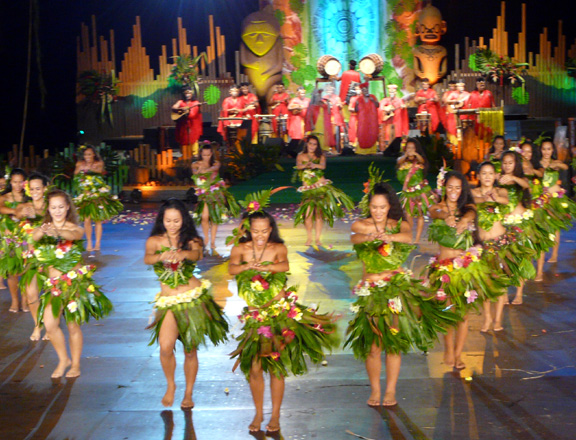
The women swivel their hips hypnotically until they appear to be dislocating from their sockets. The tickets for this evening were definitely worth two and a half hours standing in line to get them.
|



















